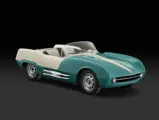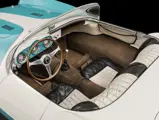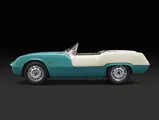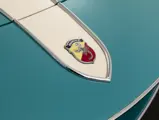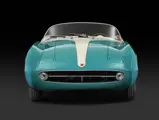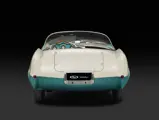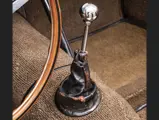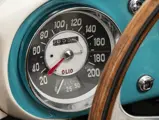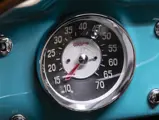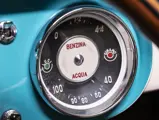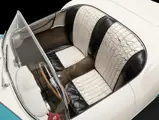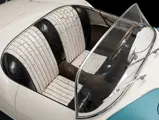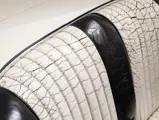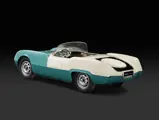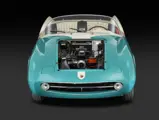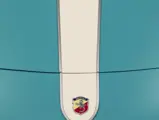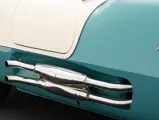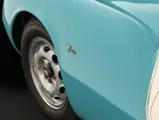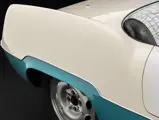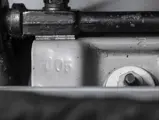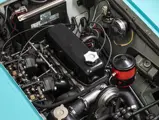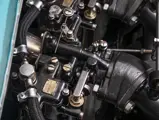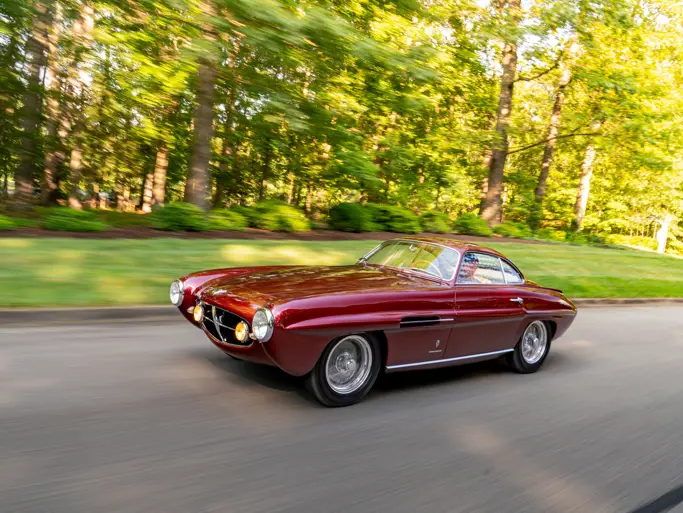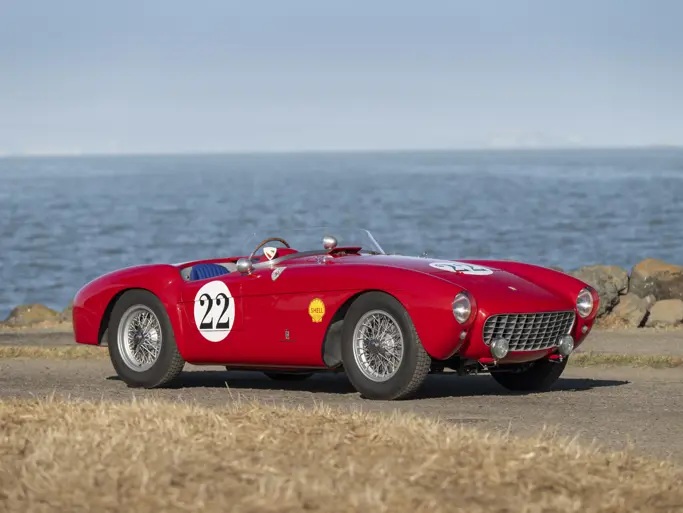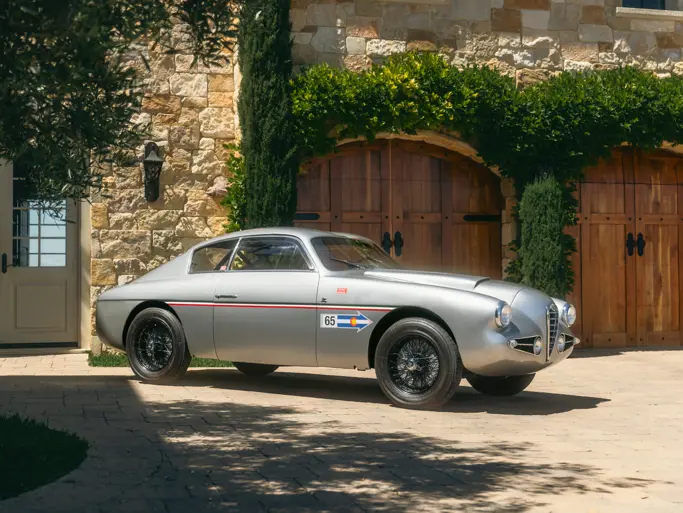Private Sales
1955 Abarth 208 A Spyder by Boano
One-off Boano Coachwork, A Masterpiece of Stile Transatlantico
{{lr.item.text}}
€795,000 EUR | Asking
 | Milan, Italy
| Milan, Italy
{{internetCurrentBid}}
{{internetTimeLeft}}

- One-off bodywork designed by Giovanni Michelotti for Boano
- Exceptionally well-preserved and kept in storage for decades; professionally repainted on returning to the road
- Accompanied by an Abarth Classiche Certificato di Autenticità
- A masterpiece of Stile Transatlantico
While the worldwide automotive market had largely been on hold during the Second World War, the conclusion of hostilities finally came in 1945. The reopening of factories for civilian automotive production signified a tremendous amount of change and advancement across the industry. Not only did progression come in the form of engineering, but perhaps more importantly within automotive style and design.
In the immediate post-war period, the American market was the most buoyant and arguably had the most flamboyant style. Influenced heavily by the ongoing Space Race, almost year-on-year, more cars would appear with rear tailfins to resemble the rockets and aeroplanes being designed around the same time, and those tailfins continued to grow with constantly bolder evolution. Coupled with bright, exciting two-tone paint jobs, these cars from manufacturers such as Chevrolet, Pontiac, Cadillac, and Ford embodied the 1950s American dream. Hoping to expand their footprint stateside, several European manufacturers produced coachbuilt, one-off design studies or concept cars with radical space-age styling akin to their counterparts across the Atlantic. For the Italians, this was referred to as Stile Transatlantico, as it combined the best aspects of both American and Italian automotive design, with perhaps the most well-known example of this style being Alfa Romeo’s three B.A.T. (Berlina Aerodinamica Tecnica) cars.
Having only been founded in 1949, Abarth was keen to make a name for itself both in its native Italy and abroad. Surely, designing a small run of cars exhibiting the best aspects of Stile Transatlantico would bring customers its way. This gave birth to three distinct cars; a racing-orientated spyder (designated 207 A), a coupé (209 A), and this spyder (208 A). Most sources agree that 10 examples of the 207 A were built, while the 209 A and our 208 A remain as one-offs. Both one-off cars were shown at the Turin Motor Show in 1955 alongside a 207 A.
Penned by Giovanni Michelotti for Boano, Abarth hoped this design would appeal to the American market stylistically but under the skin, these automobiles were unmistakenly Italian. They utilised an ultra-light chassis, small displacement-yet-punchy engines, coupled with precise and delicate handling. Mechanically, much was carried over from the Fiat 1100, including the car’s suspension and 1,089 cc four-cylinder engine. Further performance was extracted from this with Abarth’s tuning kit, which consisted of twin-Weber carburettors and a custom exhaust header, making the engine good for 66 bhp.
The 208 A did make its way to the United States and was imported via Tony Pompeo in New York City, a distributor for Abarth and many other Italian marques in New York in the 1950s. The car was imported on behalf of two brothers of the eponymous Du Pont family. Heirs to their family’s chemical fortune and passionate motor racing enthusiasts, there’s no doubt that this little Abarth would have received a lot of attention whilst out and about in their ownership.
After enjoying the Abarth for a few years, the Du Ponts sold the car to a friend of theirs, who later gifted it to Bill Hale. Both Bill and his friend were aircraft mechanics working for the Du Ponts. In a conversation with a member of RM Sotheby’s Private Sales department, Bill recalled that he first saw the Abarth at his friend’s house in Delaware in the early 1970s and was gifted the car in 1973. Bill took the car home to Long Island, New York, where he drove it locally for the following few summers.
Around 1975, Bill’s parents sold their home where the car was kept and moved to Maine, and the car would move north with them. Recently married, Bill drove the car with his wife from Long Island up to Maine. A memorable drive, he recalls driving the car from Long Island, across the Brooklyn Bridge to Manhattan, and subsequently north to Maine. Much of the drive took place in a torrential downpour, and needless to say, the Abarth was not equipped to handle foul weather. Bill and his wife spent half an hour on that journey with the car hiding under a bridge, waiting for the weather to clear before they continued.
The Abarth lived in Maine for several years, where his cousin continued to drive it in the summer for a few years, and when Bill bought a house on Long Island, the car returned back to New York with him. The car remained largely unmolested during this time. Bill remembers souring a correct-specification Abarth rear axle from a friend in Long Island when the Spyder’s rear axle needed to be replaced. When he purchased the car, a custom manifold and SU carburettors had already been fitted by the Du Ponts.
Upon its return to Long Island, the car was largely hidden from public view until 2007, when it was finally rediscovered by Etceterini collector Elad Shraga. Enamoured with the Abarth, Shraga convinced Bill over the course of the next two years to sell him the car in the summer of 2009. Found to be in exceptionally original condition, it was determined that work needed to be done to the car to rectify some previous minor damage, but its astonishing originality should be preserved. As such, the bodywork was repaired and the mechanical components were restored to bring the 208 A Spyder back to running order. However, nothing else was restored, resulting in an utterly charming and fascinating automobile.
Opting to admire the car privately, the Abarth 208 A was shown only once at the Amelia Island Concours d’Elegance in 2013 by Elad Shraga, however, it would surely be welcome at any number of concours events or rallies, due to its rarity and historical significance. Sold to the current owner a few years ago, it has recently received a bare-metal repaint in its original colours in its native Italy at a cost of over €30,000. This work was carried out under the guidance and supervision of Corrado Lopresto and his team in Italy to concours-level conditions. This is an icon of Stile Transatlantico and a significant part of Abarth’s early history. It would be a significant addition to any collection worldwide.

